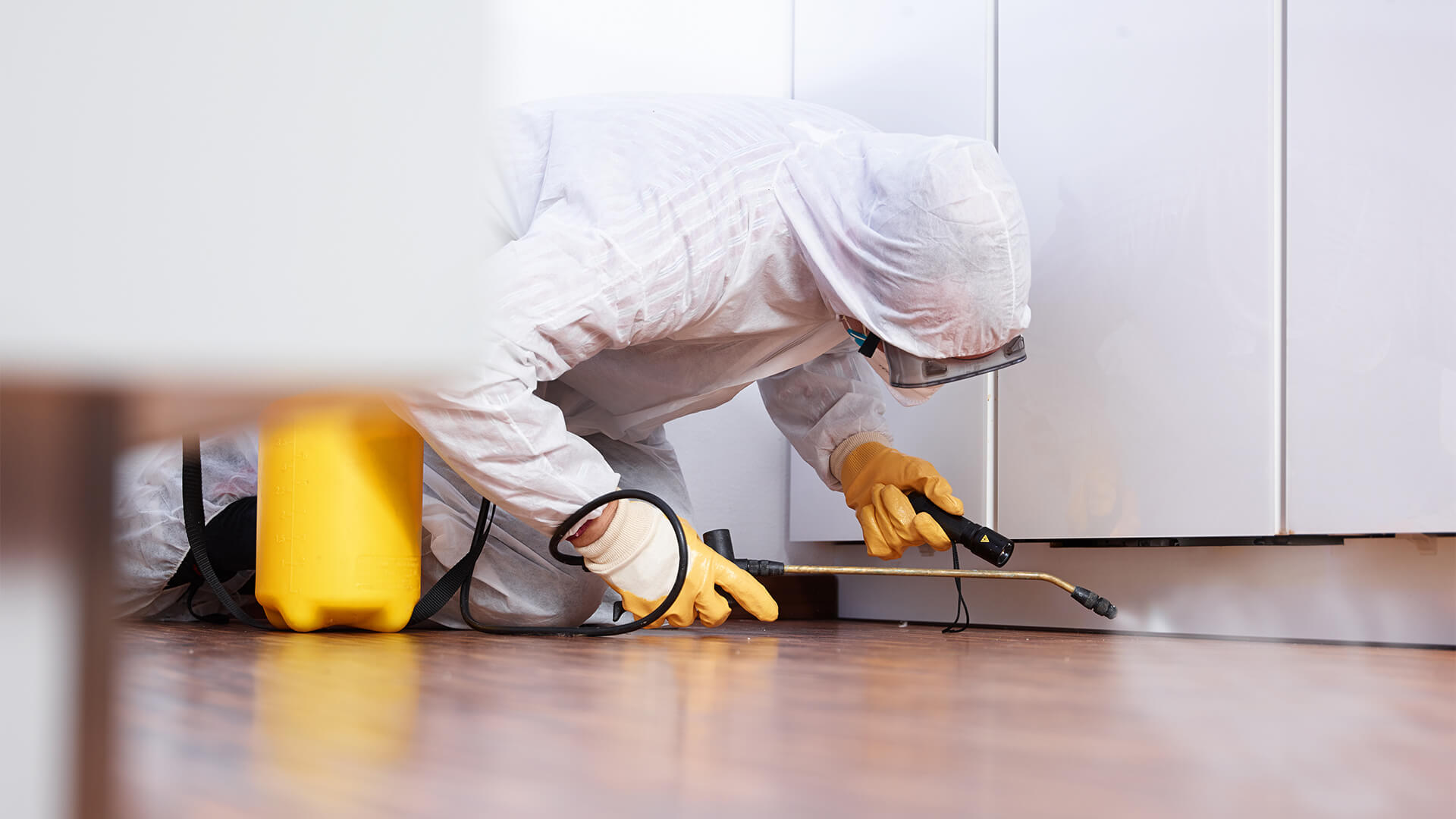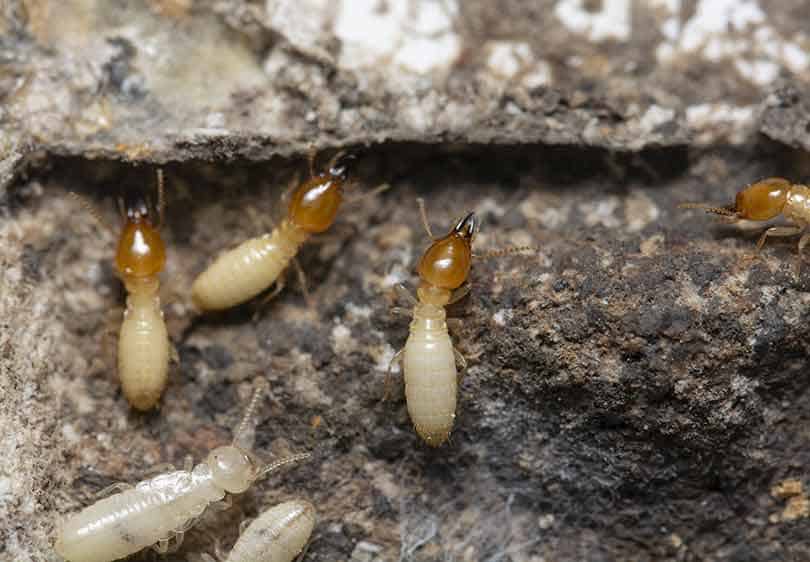Relax Easy with Orem Pest Control: Reliable Protection Against Pest Intrusions
An Insight Into Numerous Kinds Of Parasite Control Solutions Available in the Market
In the world of insect control solutions, a varied array of approaches exists to address the consistent obstacle of taking care of unwanted burglars. As pests continue to adapt and develop, the requirement for reliable and lasting bug control procedures comes to be significantly paramount. Orem Pest Control.
Chemical Sprays
Chemical sprays are typically used in bug control services to successfully get rid of and stop infestations. These sprays include different chemicals that target details bugs, such as bugs, termites, or rodents. The energetic components in these sprays work by interfering with the parasites' worried systems, creating paralysis or fatality upon get in touch with.
Expert insect control services employ experienced technicians that understand the proper application of chemical sprays to make certain optimum efficiency while reducing risks to human beings, family pets, and the environment. These technicians carry out complete evaluations to identify the sort of insect problem and figure out the most ideal spray to deal with the problem.
One of the main benefits of using chemical sprays in parasite control is their capability to provide prompt results. As soon as applied, the spray begins working rapidly, decreasing the populace of insects in a prompt manner. In addition, chemical sprays can provide durable security against future infestations when applied routinely as part of a thorough parasite management plan.
Biological Control

Classic organic control entails presenting all-natural adversaries of the parasite varieties into the atmosphere. These all-natural opponents, such as pathogens, predators, or bloodsuckers, aid manage bug populaces by exploiting or contaminating them. This approach is frequently used for long-term pest management and establishing an all-natural equilibrium in the environment.
On the other hand, augmentative biological control entails launching multitudes of valuable microorganisms, such as predative pests or nematodes, to regulate existing pest populations. This approach is more prompt and can be especially helpful in agricultural setups to deal with current pest infestations.
Organic control techniques are favored for their environmentally pleasant nature, very little effect on non-target types, and decreased chemical pesticide usage, making them a sustainable insect management alternative for various sectors.
Traps and Lures

On the various other hand, baits are compounds utilized to bring in pests to a details area for control objectives. Lures can be infected or non-poisoned, with infected lures being commonly used for pests like ants, cockroaches, and rodents. Non-poisoned baits are commonly used together with catches to draw pests right into the trap for capture. Proper positioning and selection of catches and lures are vital for their efficiency, making them valuable devices in integrated pest administration techniques. By understanding the actions of the target insect, parasite control experts can efficiently use lures and traps to handle bug invasions effectively - Orem Pest Control.
Integrated Insect Administration
Integrated Pest Administration (IPM) is a detailed method that integrates numerous pest control methods to properly manage and eliminate parasites while lessening ecological effect. IPM concentrates on long-lasting avoidance methods by considering the biology and habits of pests, in addition to the specific atmosphere in which they exist. This approach integrates a selection of pest control techniques such as organic control, habitat manipulation, alteration of cultural methods, and using resistant crop selections.
One of the essential concepts of IPM is to focus on non-chemical pest control techniques whenever feasible. This may include using all-natural predators to regulate pest populaces or implementing physical barriers to avoid problems. Chemical pesticides are utilized as a last hope and are used deliberately to reduce damage to non-target microorganisms and the bordering ecosystem.
Warm Treatment
As a corresponding approach to Integrated Parasite Management techniques, warm treatment is a targeted method that uses the power of heats to eradicate insects successfully and successfully. This special info approach is specifically valuable in removing bed pests, termites, and various other parasites that might be hiding in hard-to-reach locations within a framework. By raising the ambient temperature to levels that are lethal to the insects but safe for the building, heat therapy can pass through splits, holes, and furniture where traditional chemicals could not get to.
Throughout a warm treatment session, specialized equipment is made use of to warm the ravaged location to temperature levels between 120 ° F and 140 ° F, a variety known to kill parasites in all life phases. The process usually takes a number of hours, guaranteeing that the heat penetrates deep adequate to get rid of the entire pest population. Among the essential advantages of warmth therapy is that it is chemical-free, making it a ecologically friendly and secure choice for insect control. Additionally, warmth treatment is known for its capacity to supply quick outcomes, typically fixing insect problems in a solitary treatment session.
Conclusion

 Having actually attended to the efficiency of chemical sprays in bug control solutions, the emphasis currently shifts to biological control methods as a sustainable alternative for taking care of insect problems. Baits and catches are important devices in parasite control services, supplying targeted solutions for specific bugs. By comprehending the behavior of the target parasite, parasite control experts can effectively utilize baits and traps to handle parasite infestations successfully.
Having actually attended to the efficiency of chemical sprays in bug control solutions, the emphasis currently shifts to biological control methods as a sustainable alternative for taking care of insect problems. Baits and catches are important devices in parasite control services, supplying targeted solutions for specific bugs. By comprehending the behavior of the target parasite, parasite control experts can effectively utilize baits and traps to handle parasite infestations successfully.Integrated Pest Management (IPM) is an extensive technique that combines numerous insect control techniques to successfully take care of and remove pests while decreasing ecological effect.In conclusion, different kinds of bug control solutions are available in the market to resolve various insect problems.